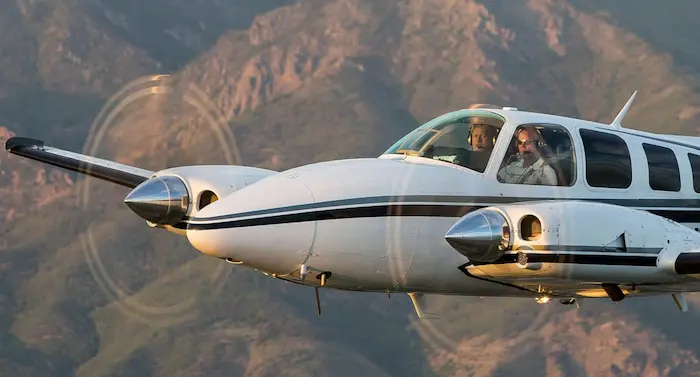Paper airplanes are a universally recognized toy that children everywhere enjoy. They are incredibly easy to make, requiring only a piece of paper and a few simple folds to transform it into a flying creation.
Their accessibility and simplicity have made them a favorite across the globe, with little standing in the way of anyone folding and launching one wherever they are. Most of us built this Paper Airplane during our early school time.
Surprising Facts about Paper Airplanes and the History
While they’re often used to amuse, annoy teachers, or test how far they can fly, paper airplanes have a rich history that goes far beyond simple fun. They’ve played a surprisingly significant role in the world of aviation and beyond.
From being launched from space to flying giant versions over the deserts of Arizona, paper airplanes have a much more fascinating history than most people realize. As explored by SlashGear, the evolution of these lightweight flyers has influenced avionics, research, and even scientific innovation throughout the years.
The first paper airplanes originated in ancient China
Although modern aircraft are relatively recent inventions, the concept of paper airplanes has a much older history. It’s unclear exactly when paper airplanes were first created, but evidence suggests that ancient societies in China and Japan may have developed early forms of gliders made from paper-like materials. For example, records indicate that kites made from papyrus were used in China long before they became widespread across the region.
Historians believe that these early gliders were in use more than 2,000 years ago, with some evidence pointing to their construction as early as 500 B.C. In addition to papyrus, materials such as linen and bamboo were used to create gliders. Other countries in Asia, including Malaysia and Indonesia, were also developing primitive gliders around the same period.
While the exact appearance of these early gliders is not well documented, it’s unlikely they resembled the paper airplanes we know today. Some may have been elaborately shaped to resemble birds, while others likely took on simpler kite-like forms.
Beyond being used for experimentation and understanding aerodynamics, these gliders had practical applications. For instance, General Han Hsin is said to have used a kite to measure the distance his army needed to dig to tunnel beneath a defensive wall.
They were originally called paper darts
Interestingly, although paper airplanes have been around for a long time, they weren’t always called by that name. Before the invention of airplanes, the term “airplane” didn’t exist, so these folded creations were known as paper darts. This naming makes sense, considering that darts are one of the oldest tools used by humanity since prehistoric times, often employed as weapons for hunting or fighting.
The term “paper darts” can be traced as far back as 1864, when children would fold and fly them for fun. Instructional books from that time detailed how to fold paper to create darts that could glide through the air. Remarkably, the folding techniques described in those early books are nearly identical to the popular designs used today. This shows that while the name has changed, the concept of paper airplanes has remained largely the same over time.
Other reference books from the late 1800s and early 1900s mention that paper darts were commonly used as practical jokes or for causing mischief, much like modern paper airplanes.
They were often thrown by children in classrooms, and even in the New York Stock Exchange, where a rule was put in place banning members from throwing paper darts during sessions. Ultimately, paper darts served similar purposes to today’s paper airplanes, both as a source of entertainment and as a lighthearted nuisance.
Early paper airplanes had flapping wings
Although the term paper darts was commonly used to describe what we now consider paper airplanes, with their angular shapes and straight lines, references to paper aeroplanes date back as far as 1890. However, this term didn’t refer to the same designs as paper darts. Instead, it was used to describe bird-like creations that many people of the time believed would resemble the flying machines of the future.
During the late 1800s, a popular belief was that any human-made flying machine would need to mimic the mechanics of birds or other animals, using flapping wings to achieve lift. In 1894, Scientific American even published instructions for constructing a paper aeroplane named the Albatross, reflecting this widespread notion.
This idea built on the work of Leonardo da Vinci, who extensively studied the possibility of man-made flight. Throughout his career, da Vinci created numerous paper models in an effort to test his designs for potential flying machines. However, many of his concepts, including those inspired by animals like bats, were limited by the lack of knowledge about aerodynamics at the time. As a result, these early designs were impractical and unable to fly or glide successfully.
The science behind paper airplanes is the same as for real aircraft
The science behind how paper airplanes fly is surprisingly similar to that of real aircraft. To stay airborne, paper airplanes need to be aerodynamic, minimizing drag as they slice through the air. At the same time, they must be light enough to reduce the pull of gravity that would otherwise bring them back to Earth quickly.

Instead of engines providing thrust, the force comes from the person throwing the paper airplane, propelling it forward. As the plane moves through the air, the wings generate lift, pushing it upward and helping it stay aloft. However, as the thrust fades, the plane eventually loses the lift needed to counteract gravity and drag, causing it to descend.
There are, of course, key differences between paper airplanes and powered aircraft, such as fighter jets or commercial planes. Paper airplanes lack any form of power beyond the initial throw, meaning they cannot adjust their flight path or acceleration once in the air.
This limitation makes them dependent on the thrower’s technique, requiring the right angle and speed to achieve an optimal glide. Different paper airplane designs also demand specific adjustments in throwing angle and velocity to perform at their best.
Early engineers used paper airplanes to experiment with aerodynamics
Paper airplanes offer several key advantages that make them an ideal tool for experimenting with aerodynamics. Paper is both inexpensive and readily available, allowing for the creation of numerous samples for testing. Its flexibility and lightweight nature make it perfect for crafting a variety of designs without requiring complicated machinery or equipment. Researchers can simply choose a design and start folding or cutting with ease.
This accessibility likely explains why many early aviation engineers used paper darts in their experiments. Sir George Cayley, often credited with inventing the airplane in the early 1800s, used paper models to test his ideas after discovering the four forces of flight and determining that a fixed-wing design was more effective than flapping wings.
Similarly, the Wright Brothers incorporated paper into their early aircraft designs, building paper wings and testing them in a rudimentary wind tunnel to simulate real-world flight conditions.










